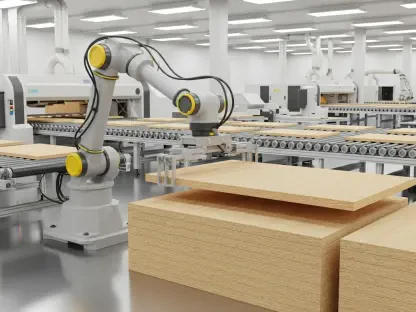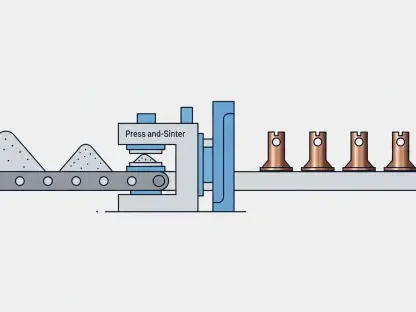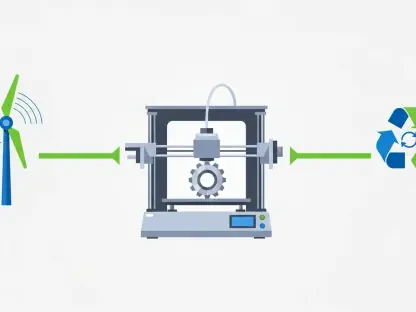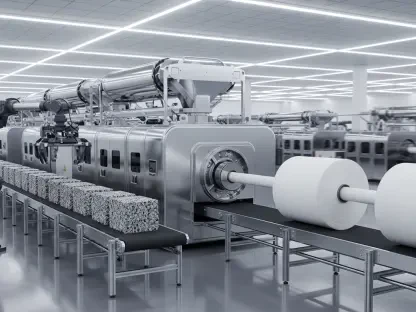Industry 4.0 has promised a plethora of advancements for manufacturers, from real-time data analysis to interconnected systems that enable seamless production processes. However, the journey to fully integrating these smart technologies can be daunting, especially for small-scale manufacturers who may not have the resources of industry giants. This guide offers a pragmatic approach, beginning with basic adjustments and progressing to sophisticated AI implementations, ensuring that even the smallest players can harness the benefits of Industry 4.0.
1. Initiate Basic Adjustments on the Production Line (Low Impact, Low Complexity)
Starting with the simplest changes can yield significant improvements without overwhelming the system with complexity. One effective starting point is to automate timekeeping. Manual recording of employee hours is not only time-consuming but also error-prone. Automated timekeeping systems can eliminate these issues, providing three major benefits: eliminating manual errors during data input, ensuring seamless integration with payroll systems, and offering opportunities for workforce performance insights. For those still using legacy timekeeping systems like punch cards or paper records, a simple Robotic Process Automation (RPA) solution can digitize and accurately record this information with minimal disruption.
Another basic yet impactful adjustment is the automation of production reporting. Traditionally, production reports require manual data entry, which can be a tedious and error-prone process. By deploying systems that automatically generate daily production reports at the end of each shift, businesses can save time and improve accuracy. These automated data acquisition systems are capable of integrating with older machinery through suitable sensors or RPA implementations. This means that manufacturers can upgrade their reporting capabilities without a significant overhaul of their existing infrastructure.
2. Achieve Immediate Successes in the Supply Chain (High Impact, Low Complexity)
After establishing a level of automation on the production line, the next logical step is to extend these capabilities to the supply chain. One of the most effective ways to do this is through sales dashboards. These dashboards pull existing data from CRM, ERP, and sales databases, offering sales reps a comprehensive snapshot of their performance. They can see areas needing attention and analyze data by various metrics such as time ranges, product or customer groupings, units, monetary amounts, regions, and territories. This real-time visibility into sales performance can drive more informed decision-making and ultimately improve sales outcomes.
Inventory optimization is another high-impact, low-complexity improvement in the supply chain. Overstocking or understocking can be costly and disruptive, but a well-implemented inventory dashboard can mitigate these issues. Such dashboards provide real-time visibility into current stock levels, suggestions for reorders, inventory turnover rates, and forecast demands. By maintaining optimal inventory levels, manufacturers can reduce waste, avoid stockouts, and better meet customer demand.
3. Discover New Business Efficiencies (High Impact, Moderate Complexity)
For businesses ready to tackle more complex improvements, AI-driven tools such as PO and contracts analyzers can unlock substantial efficiencies. These AI tools analyze purchase orders and contracts to extract key information like payment terms, delivery schedules, and pricing. They flag risky terms and suggest safer alternatives, providing automated alerts for contract milestones. This not only accelerates contract review and approval processes but also ensures obligations are met and risks are minimized.
Similarly, the implementation of EDI-ready shipping manifests can transform how shipping data is managed. Traditionally, this data might be collected manually, converted to paper-based manifests, and then physically transported or faxed, all of which are inefficient and prone to errors. An EDI (Electronic Data Interchange) system can automatically convert raw shipping data into standardized formats that are compliant with regulations and ready for secure transmission. These systems provide audit logs and tracking information, ensuring full transparency and traceability for every transaction, thereby improving efficiency and compliance.
4. Streamline Business Processes (High Impact, Moderate to High Complexity)
Streamlining business processes can further enhance operational efficiency and effectiveness. A robust document management system can significantly reduce the time spent on searching, sorting, and managing documents. Often, vital documents are scattered across multiple folders and systems, making retrieval cumbersome. A custom document management system allows for quick text searches and can automate the routing of documents. For example, a production report could automatically be sent to both the production manager and operations manager for review, thus speeding up decision-making and reducing administrative overhead.
The procure-to-pay (P2P) process is another area ripe for automation. Even if an ERP system is not in place, P2P processes can be managed through a combination of standalone software, manual tracking tools, and basic workflow automation. An RPA bot can read purchase requisition emails, extract relevant details, and automatically generate purchase orders. These POs are then routed to the appropriate stakeholders for approval. The system can also track order confirmations, update the procurement system, and match invoices before triggering payment, thereby streamlining the entire procurement process.
5. Develop Intelligent Production Environments (High Impact, High Complexity)
For manufacturers looking to become truly intelligent enterprises, AI-based production schedulers and resource managers offer the next level of sophistication. When a new customer order comes in, AI systems analyze various factors including product specifications, quantities needed, and delivery deadlines. They then scan historical data related to production times, material availability, and current machine performance. Considering real-time factors like labor availability and existing workloads, the AI generates an optimized production schedule that meets customer deadlines and maximizes resource utilization.
Maintaining the production schedule requires adaptive resource management. The AI system continuously monitors conditions such as labor shortages, machine breakdowns, and material lead times, making real-time adjustments to keep everything on track. This dynamic allocation of resources ensures that production timelines are met and resources are used efficiently, ultimately leading to increased productivity and customer satisfaction.
6. Adopt Customer-focused Manufacturing (High Impact, High Complexity)
The next frontier in manufacturing is creating customer-centric production environments that allow for personalized product offerings. Implementing a web or mobile product configurator gives customers an intuitive interface to customize products to their liking. They can choose colors, materials, features, and specifications, making the customization process both easy and enjoyable. This configurator should seamlessly integrate with backend systems like ERP and Manufacturing Execution Systems (MES), triggering appropriate production flows and ensuring that custom orders are fulfilled efficiently.
This high level of customization not only enhances customer satisfaction but also opens up new revenue streams by catering to niche markets. The ability to provide personalized products can differentiate a manufacturer from competitors and build stronger customer relationships.
7. Achieve Futuristic Operational Floors (High Impact, High Complexity)
Next-generation shop floors leverage IIOT (Industrial Internet of Things) to create highly efficient and intelligent production environments. By deploying sensors on machines, real-time data is transmitted for analysis and visualization, helping managers make informed decisions.
One practical application of IIOT is AR-enabled machine diagnostics. Technicians can view machines through a tablet or smartphone camera, with the AR app overlaying digital information such as interactive guides, diagnostic data, and highlighted problem areas. This augmented reality helps technicians diagnose and repair issues more effectively, reducing downtime and improving machine performance.
Preventive maintenance is another critical application. By installing sensors on critical machines and integrating them with predictive analytics systems, manufacturers can detect anomalies, diagnose root causes, and predict potential failures. This allows for prescriptive actions to be taken, optimizing maintenance schedules and preventing unplanned downtime.
8. Optimize Supply Chain Processes (Moderate Impact, High Complexity)
Industry 4.0 promises a wide range of advancements for manufacturers, from real-time data analysis to interconnected systems that streamline production processes. However, achieving full integration of these smart technologies can be challenging, especially for smaller manufacturers who lack the resources of larger industry players. This guide provides a practical approach designed to help even the smallest manufacturers tap into the benefits of Industry 4.0.
For small-scale manufacturers, the journey begins with simple adjustments. Implementing basic data collection and analysis can offer immediate insights into production inefficiencies, allowing for quick and impactful changes. From there, businesses can gradually adopt more interconnected systems, such as Internet of Things (IoT) devices that improve communication between machines and operators. These initial steps create a foundation for more complex advancements.
As manufacturers become more comfortable with these basic technologies, they can explore more sophisticated solutions like artificial intelligence (AI) and machine learning. These tools can predict maintenance needs, optimize supply chains, and even enhance product quality. Although the path to full Industry 4.0 integration is complex, starting small and scaling up allows manufacturers of all sizes to reap the benefits without overwhelming their resources. This step-by-step guide ensures that even small-scale manufacturers can stay competitive in an increasingly digitalized industry.









